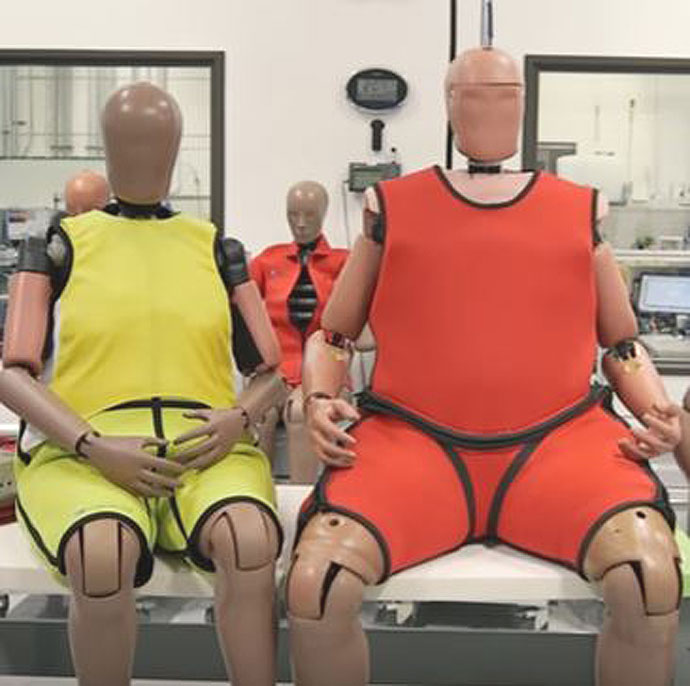
New research from Australia suggests that barriers to cycling for women are near universal.
Dr Lauren Pearson from Monash University’s Sustainable Mobility and Safety Research Group noted that twice as many men cycle as women and the reasons are depressingly familiar.
Cycling infrastructure suitable for all
The university’s survey noted that physical separation from motor traffic ‘may support more women to ride a bike through reducing motor vehicle interactions’ and that nearly half of the women surveyed said well-lit areas are an enabler of them cycling.
“It’s about planning for the trips that aren’t taken as well as those that are,” Dr Pearson told Government News. “Women want to make local trips and we need to make sure we’re building the infrastructure to support this, not just thinking about the people that are already riding, and having that gender lens on all design decisions.”

Women said having protected bike lanes or off-road paths would encourage them to cycle
According to Dr Pearson, much existing cycling infrastructure has been built with men – especially male commuters – in mind; Councils tend to build cycling infrastructure based on where the highest cycling volumes are, but this doesn’t necessarily reflect women’s needs.
The Netherlands is well known for building cycling infrastructure suitable for everyone aged 8 t0 80. This is in contrast to other countries that build it with men – especially male commuters – in mind.
Attitudes to cycling: UK vs Germany
This video is short version of the 55-minute documentary Beauty and the Bike. The film follows two groups of young women from Darlington and Bremen. Between them, they discover what makes – and stops – teenage girls from cycling. Full DVD available from www.bikebeauty.org
Gender-neutral design is often anything but
Nurturing conditions that permit and encourage women to cycle brings many benefits and should form part of a standardised policy to make women central to all aspects of planning and public realm design.
Green Councillor Holly Bruce recently introduced such a policy to Glasgow City Council, which should see changes such as wider pavements to accommodate prams and safer travel routes.
Holly Bruce explained to the Scotsman newspaper: “For too long, our streets, parks and buildings have been designed by men. The apparently ‘gender-neutral’ approach that we’ve used for centuries has meant that the male perspective has become the default.”
The world is slowly acknowledging countless examples of supposed gender-neutral design are anything but.
For example, at work, thermostats are frequently set at temperatures that suit the male body and metabolism. Women produce less heat and it’s estimated that current offices are on average five degrees too cold for women.

Until recently, crash test dummies were based on male physiology
In medicine, research into cardiovascular health has historically centred on male physiology with the result that women are 50 per cent more likely to be misdiagnosed after a heart attack. And when it comes to vehicle safety, crash-test dummies are built based on the average man’s physical dimensions – an oversight that contributes towards the fact women are over 40 per cent more likely to suffer serious injuries in a car crash. It’s only in recent years that a female crash dummy has been developed.
Glasgow deserves recognition and praise for its move towards feminist town planning. When women take the lead in this, as in so many areas of public life, amazing things can happen. The transformative changes to Dutch town planning in the early 70s were championed by women like Maartje van Putten – the first president elect of the Stop de Kindermoord protest movement and later an MEP. Here she talks to us about her campaigning work half a century ago.
The ethical choice
The ETA was established in 1990 as an ethical provider of green, reliable travel services. Over 30 years on, we continue to offer cycle insurance , breakdown cover and mobility scooter insurance while putting concern for the environment at the heart of all we do.
The Good Shopping Guide judges us to be the UK’s most ethical provider.


John Fletcher
Most of this is blindingly obvious common sense. Most (all?) men would be glad to reduce the opportunities for near misses with tons of rolling metal, something which taints most rides at some point.
What hasn’t helped is society’s idiotic moves to deny the intrinsic physiological and psychological differences between men and women. It’s a sad downside of feminism which has allowed (mainly) men to decide that if women want equality, they need to “man-up” with regard to sharing the roads with juggernauts.
Anne
There is a potential cohort of women utility cyclists, going to work, to shops etc, who don’t cycle because they need to carry stuff. To encourage them you need to promote panniers, saddlebags etc.